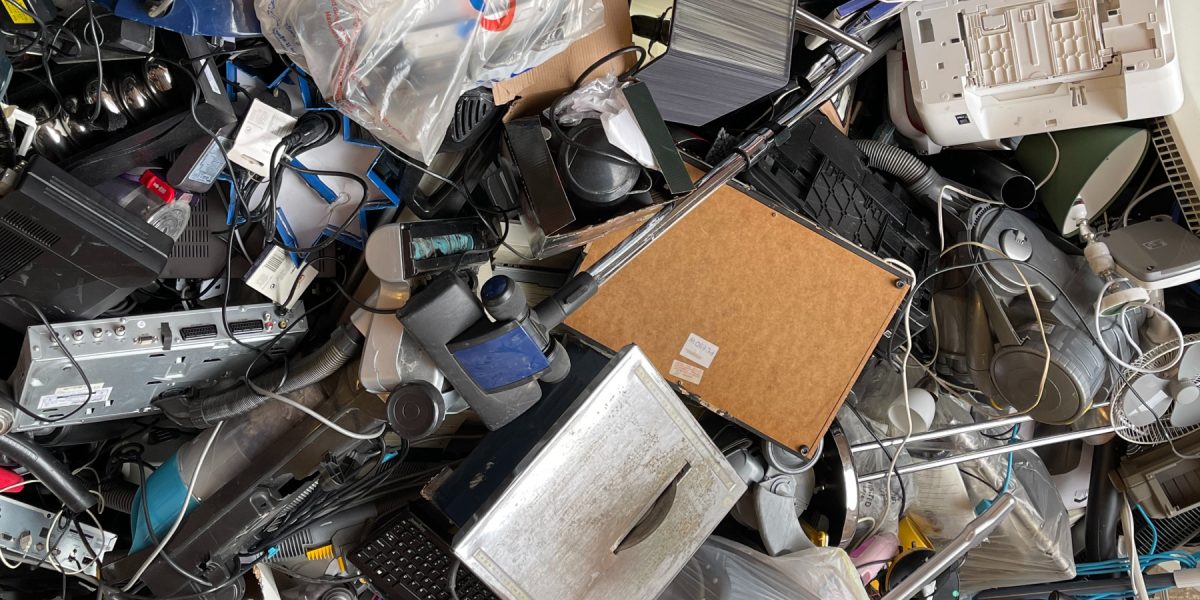E-Waste

As our society becomes increasingly dependent on technology, we have created a new waste stream in electronic waste “e-waste” also known as Waste Electrical and Electronic Equipment (WEEE), classified as a type of hazardous “universal waste”. E-waste refers to all forms of electronic waste and equipment with a plug or battery. E-waste is often sent directly to landfills or incinerators rather than being repaired or recycled. To be safely and effectively recycled, e-waste needs to be collected by a specialized recycler separate from your curbside, municipal or typical recycling program. Universities, campuses, and electronic stores often have an e-waste recycling program and community drop-off options, additionally look for “hard to recycle” drop-off locations in your community.
E-waste like batteries contain harmful chemicals that will leach out over time and could contaminate the air and water surrounding waste management facilities as well as threaten the health of waste management workers and the local community. By the same token, many electronics including cell phones and laptops contain precious and rare high-valued metals. In waste dumps around the world, informal waste collectors and recyclers put their health at risk to recover e-waste and in some cases even put e-waste through unprotected acid wash treatments to extract precious metals and other specific materials to re-sell.
As our appetite for the digital age continues to increase with the growing population, our demand for the rare earth minerals needed to create these technologies is insatiable. Companies are turning to the deep ocean for deep sea mining of necessary minerals that may cause devastating and irreversible destruction to ocean ecosystems. The highly controversial topic of deep sea mining is currently under review, learn more at The Oxygen Project. Companies are even considering mining asteroids in outer space for these precious metals (Mining Technology)!
This industry creates dangerous consequences that particularly threaten the health of low-income communities in developing nations with discarded e-waste, and by the same token, we are depleting the resources we need to create these products. The irony of the far-from circular situation has been recognized and industry is taking a leading role in addressing the gaps. In 2018, Apple came out with their Daisy iPhone robot that can disassemble 1.2 million phones a year, separating out different materials for reuse in creating new products (C-Net). Mandatory collection and recycling programs for electronics are appearing around the world as the issue gains public attention.
Tips:
Avoid contributing to e-waste by repairing your electronics when possible.
Buy and sell used before looking at new products! Back Market is a great marketplace to buy and sell used electronics.
Carefully separate and take your electronics and batteries to universal waste recycling centers or community drop-off locations.
